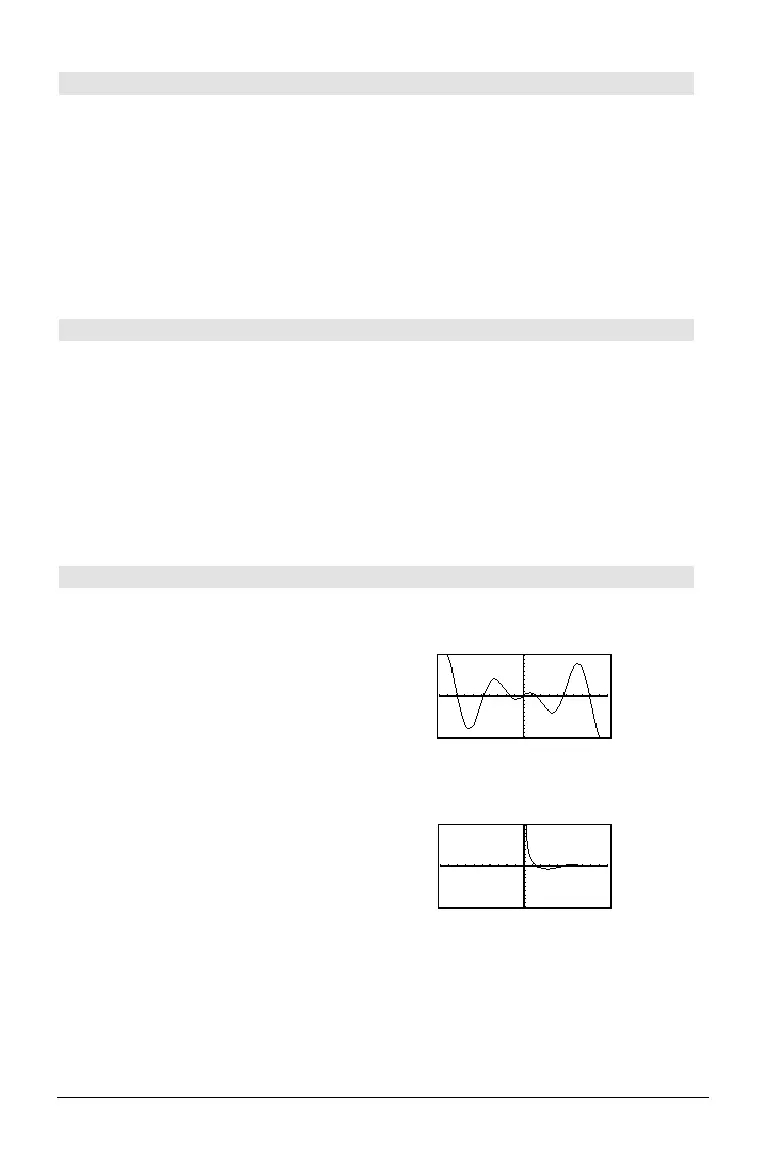Appendix A: Functions and Instructions 195
getUnits() CATALOG
getUnits() ⇒
list
Returns a list of strings that contain the current
default units for all categories except constants,
temperature, amount of substance, luminous
intensity, and acceleration.
list
has the form:
{"
system
" "
cat1
" "
unit1
" "
cat2
" "
unit2
" …}
The first string gives the system (
SI, ENG/US, or
CUSTOM). Subsequent pairs of strings give a
category (such as Length) and its default unit
(such as _m for meters).
To set the default units, use
setUnits().
getUnits() ¸
{"SI" "Area" "NONE"
"Capacitance" "_F"
"Charge" "_coul"
… }
Note: Your screen may display different
default units.
Goto CATALOG
Goto
labelName
Transfers program control to the label
labelName
.
labelName
must be defined in the same program
using a
Lbl instruction.
Program segment:
©
:0! temp
:1! i
:Lbl TOP
: temp+i! temp
: If i<10 Then
: i+1! i
: Goto TOP
: EndIf
:Disp temp
©
Graph CATALOG
Graph
expression1
[,
expression2
] [,
var1
] [,
var2
]
The Smart Graph feature graphs the requested
expressions/ functions using the current graphing
mode.
Expressions entered using the
Graph or Table
commands are assigned increasing function
numbers starting with 1. They can be modified or
individually deleted using the edit functions
available when the table is displayed by pressing
† Header. The currently selected Y= functions
are ignored.
If you omit an optional
var
argument, Graph uses
the independent variable of the current graphing
mode.
Note: Not all optional arguments are valid in all
modes because you can never have all four
arguments at the same time.
In function graphing mode and
ZoomStd
window:
Graph 1.25aù cos(a),a ¸
In parametric graphing mode and ZoomStd
window:
Graph
time,2cos(time)/time,time
¸

